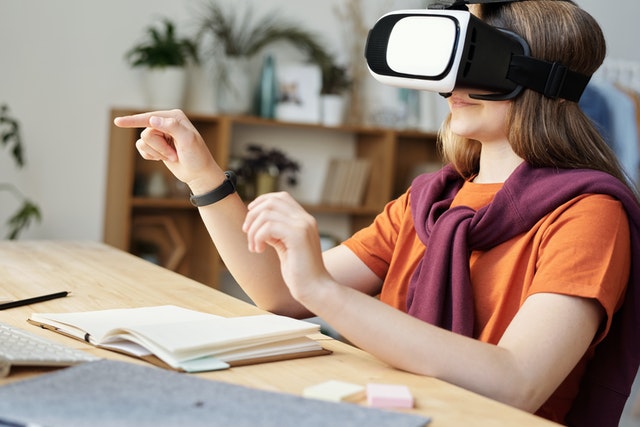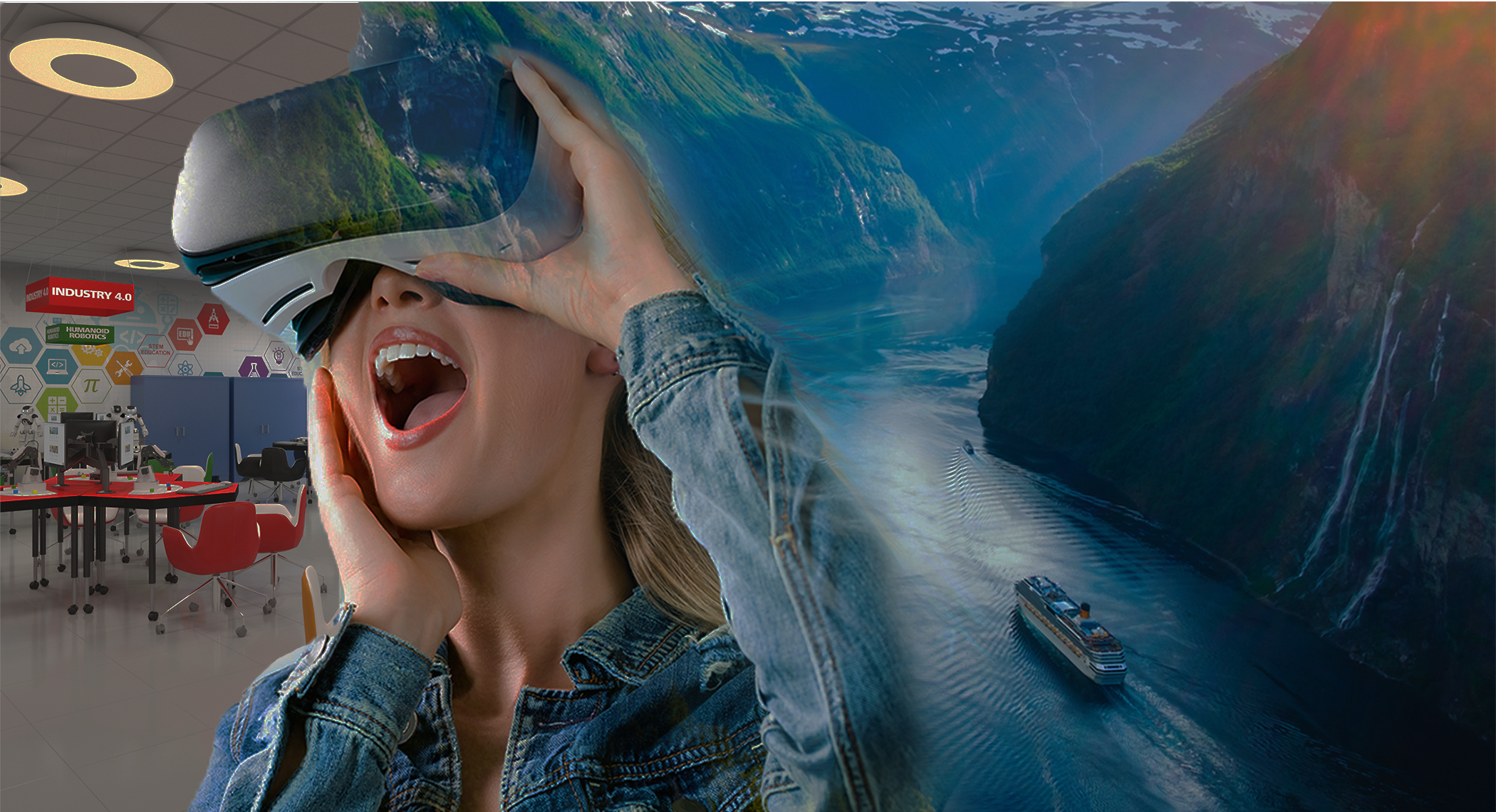By Rhonda Martinez
Virtual reality technology slowly gets adopted in various industries, and education is no exception. VR is more than just a fun thing that can help educators entertain students and improve engagement in the classroom. VR has tremendous innovative potential so it can help educators create new learning opportunities for their students.
 Photo by Julia M Cameron from Pexels
Photo by Julia M Cameron from Pexels
Jon Spike from the University of Wisconsin-Whitewater has demonstrated the possible impact of VR on education during his presentation at IDEAcon 2020. Three volunteers from the audience used Oculus Quest to defuse a virtual bomb and demonstrated the power of VR, being able to implement instructions in practice, while remaining in a safe environment.
In this case, VR provides a unique opportunity to simulate dangerous situations. However, it can also be used for other purposes, as well. For instance, one of the main challenges for many educators is to maintain a high engagement level. The effectiveness of VR is easy to explain by the fact that this technology perfectly aligns with activities students are used to. Modern students are digital natives, and VR enables educators to communicate knowledge in the most effective way possible, providing an immersive educational experience.
VR also enables educators to add value to the learning process, enhancing their students’ experience, and adding elements of collaboration and creativity. There are many apps that can be used by educators to enable students to not only learn new information but also create, explore, and evaluate their own work. VR is a technology that enables educators to present educational content in a new way so that students can get a more comprehensive understanding of the subject than when simply memorizing facts.
For example, Google has its Arts and Culture app that includes works of art from more than 1,200 museums so that students can take a virtual tour and explore art in a more personal and immersive way than when looking at photos. The New York Times also has a VR app that includes immersive films about different subjects. Educators can easily integrate these films into their curricula so that students can explore Antarctica or even dig into the details of the refugee crisis.
How Educators Can Use VR in the Learning Process
-
Creative opportunities
Not only can students consume content by using the VR technology, but they can also use it to create. One of the most well-known examples of VR apps that can be used for creative purposes is Tilt Brush. With this tool, students can use different types of brushes and palettes to create 3D art. Students can create characters, landscapes, and interiors with the help of their VR headsets, and others can experience their art in virtual reality, as well. Besides, the creative process itself can be completely collaborative.
Moreover, students can create their own VR apps. Students from the University of Washington in Seattle have already used VR hardware and software for coding. Obviously, VR is a perfect environment for coders who want to create VR apps. Students have already created a number of virtual reality and augmented reality apps, including an AR piano teacher, cooking tutorial, and several games.
-
Immersive language learning
Many people agree that the best way to learn foreign languages is through complete immersion. Instead of learning languages through traditional classroom experiences, students can take advantage of experiential learning and not only study their target language but also experience it in a more general context. This is a reason why educators use various cultural experiences, such as exchange trips, and ask students to speak the target language in the classroom.
Obviously, the teachers’ ability to provide immersive language learning is limited by numerous factors, including geography and resources. However, teachers can use VR apps to boost the learning experience significantly. For instance, apps like Mondly enable students to practice their conversational skills by participating in various realistic simulations.
-
Simulations and modeling
Virtual reality also enables people to learn various practical skills in a virtual environment that is close to the real environment they’ll have to deal with. For example, you can learn to drive a car with no need to drive a real car and to spend money on gas. Architectural engineering students can use virtual reality to experiment with different types of structures and materials. VR simulations can provide students with great educational experiences and provide educators with the necessary information for assessment, at the same time.
-
Creating new learning opportunities
Adam Simon, content writer and reviewer at Legit Essay Writing Services said that: “Some educational institutions are able to take students on field trips, while for many students, it’s not an option. For example, many students are disabled, hospitalized, institutionalized, or homebound. Some students also simply live in remote areas. Besides, not all schools have the necessary resources. Quite often, students who could benefit from such enriching educational experiences don’t have access to them, and VR can help educators address this problem.”
For example, thanks to VR technology, students can visit museums, historical locations, and national parks, with no need to leave the classroom. This is also a great opportunity to explore remote areas of our planet, such as Sub Saharan Africa or Antarctica.
-
Developing empathy
The lack of empathy has always been a big problem among students, and VR can help educators address this problem, as well. Many students have never experienced war and natural disasters, and neither did they live in poverty. Besides, most students have never experienced other cultures and various religious traditions so they don’t understand their impact on societies.
Pen pal programs and current events curricula can help, but their impact is still limited. VR enables students to visit places they’ve never been to. They can experience everyday events and conversations of people from other cultures. For example, American students can sit in a classroom in Kenya, search for clean water in Ethiopia, etc.
Final Thoughts
Virtual reality is a unique technology that enables educators to boost the learning experience by making it more comprehensive and engaging. Besides, VR creates various learning opportunities that would never be possible without it. Educators can simulate real-life environments and situations, enabling students to not only learn something new but also to use their knowledge in practice. Virtual reality can not only help students meet their learning goals but also create a completely new, immersive educational experience.
Discover more about RobotLAB Expeditions V2!

Author's Bio
 Rhonda Martinez is an educator and blogger who is passionate about all things edtech. As an educator, she is always on the lookout for new, effective ways of teaching. She likes to integrate technology in lessons to make them more productive and interesting.
Rhonda Martinez is an educator and blogger who is passionate about all things edtech. As an educator, she is always on the lookout for new, effective ways of teaching. She likes to integrate technology in lessons to make them more productive and interesting.


